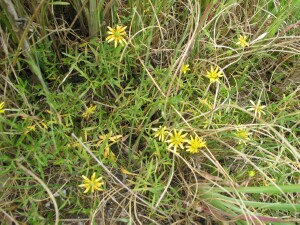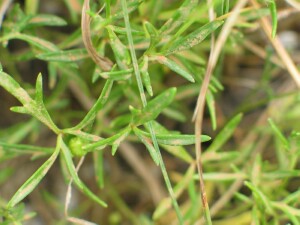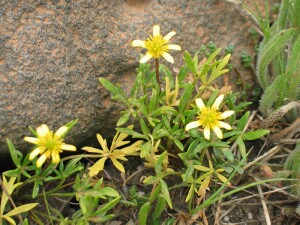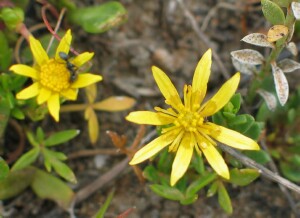Large River Buttercup
Back | Salinity Indicator Plants Home | Common name home | Scientific name home | Photo Gallery | Glossary
Family: Buttercup (Ranunculaceae) |
| Scientific Name: | Ranunculus papulentus |  Plants of Large River Buttercup Photo: A J Brown | |||||
Status: | Native to Victoria, South Australia and New South Wales | ||||||
Plant Description: | Small or robust perennial herb with stolons and flowering stems 3–30 cm high. Leaves are hairless, except for a few scattered hairs on the margins. Each leaf is 2–4 cm long and divided into three primary segments, each of which is further divided into 3–5 lobes or teeth. Leaf stalks mostly 4–25 cm long. Flower petals yellow, 7–12 mm long and 2–4 mm wide. Each petal has a small, semicircular or elliptic, lobe towards its base lobe containing nectar. Fruit composed of 12–36 achenes, 1.7–3.6 mm long, irregularly wrinkled or pitted, or rarely smooth. When mature, the achene is often pale and thickened along the dorsal ridge. | ||||||
Habitat: | Grows on wet sites, in freshwater lagoons and along rivers in southern Victoria. Sometimes found on slightly saline sites. Scattered and listed as threatened but poorly known in Victoria by the Department of Sustainability and Environment. Very similar to Brackish Plains Buttercup (Ranunculus diminutus) but generally of larger habit with longer leaves and larger flowers.
|
 Muddy leaves of Large River Buttercup Photo: A J Brown |  Leaves and flowers of Large River Buttercup Photo: A J Brown |
|



